Best User Retention Tools & Software to Keep More Customers
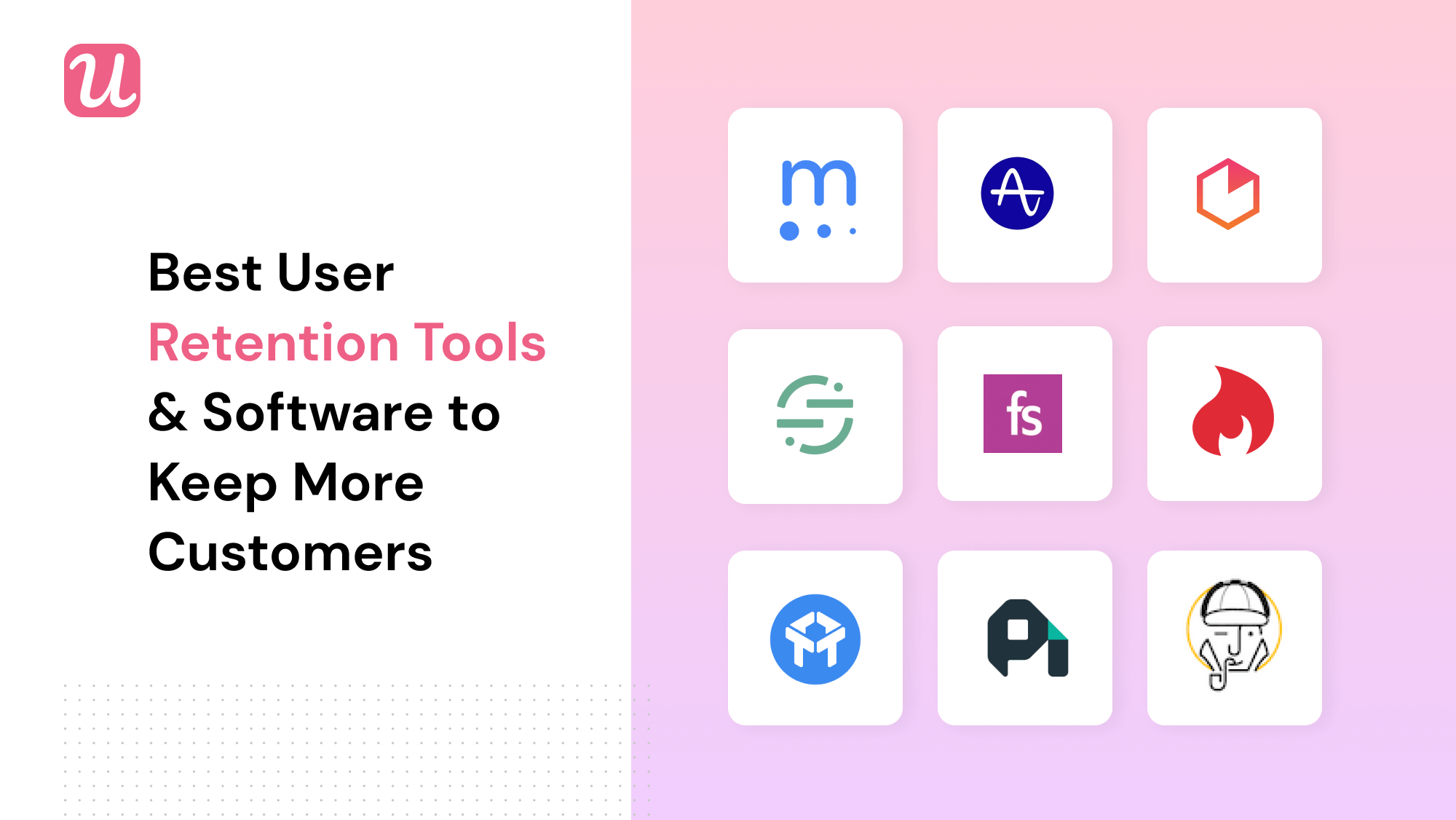
The choice of user retention tools and software available to SaaS businesses is completely overwhelming.
This blog will explain the types of user retention tools & software so that you can take control. We will help you choose the best options for your needs.
If you’re battling with user retention for your SaaS, look no further.
TL;DR
- User retention is the ability to retain customers over a period of time.
- It’s extremely important for SaaS companies as they rely on recurring subscriptions.
- There are a lot of user retention tools in the market and the best one depends on many factors such as the features, data, or insights you need, your team members, profitability, budget, and more.
- Some of the best tools to analyze user retention include Mixpanel, Amplitude, and Heap.
- To understand why customers churn and what their behavior looks like, you need to have session recording and user behavior tracking tools. The best ones are Hotjar for session recordings and heatmaps and Userpilot for tracking in-app feature usage.
What is user retention?
The ability of a company or product to retain its customers over time is known as customer retention. When a product or business has high customer retention, people are more likely to return to it, continue to buy it, or not defect to another product or business.
Why retention matters
All successful product managers are concerned about retention.
Why?
Because it’s more cost-effective to keep existing customers than to acquire new ones – by a factor of x6 to x7.
As we said in our recent post:
The Lifetime Value (LTV) of a SaaS customer trickles in over a long period of time – and the longer that time is, the more the customer will pay and the higher that value is.
While the Customer Acquisition Cost (CAC) is all incurred upfront.
Retention is the difference between a customer who leaves on the first day without paying you a cent, losing you money and one who stays for years and years and makes you a ton of profit.
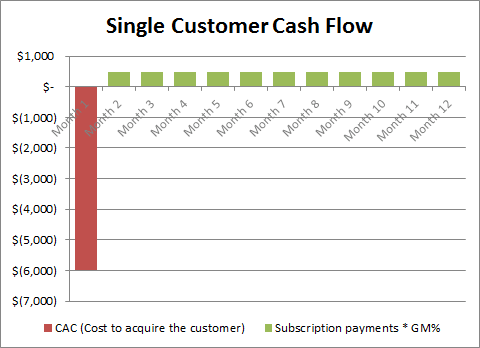
Source: forentrepreneurs.com
This graph from David Skok makes that point brutally clear. Until the green outweighs the red, this new customer is a loss-maker.
So that’s why retention matters (especially Day 1 Retention) so much.
Simple, right?
Why do users churn out?
That’s simple too.
Users churn when they don’t get value from your SaaS. So user retention is about making sure users realize the value.
Reducing churn is about:
- Identifying the value your SaaS provides
- Making it as easy and fast as possible for users to grasp it and achieve it
- Providing more and more value over time, along a clearly-defined customer lifecycle journey – like this:
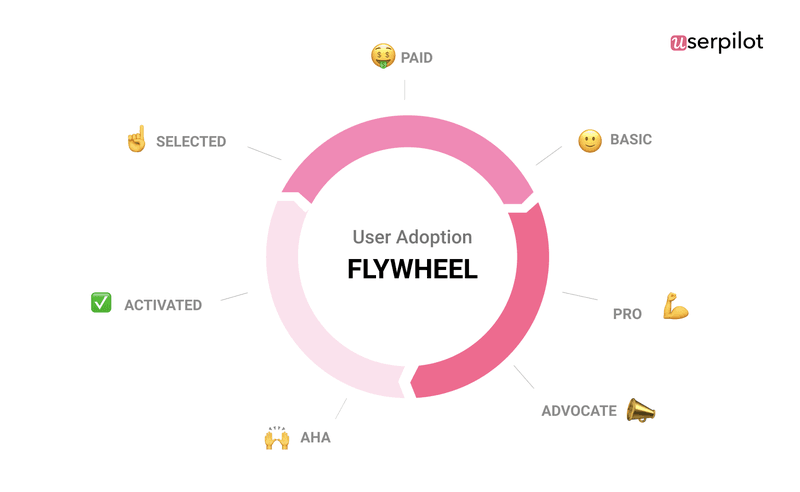
The system you build to gain greater efficiency in pushing your users down the user journey is called a flywheel. We have discussed the process of building user adoption flywheels in our earlier blog.
Those factors are common to all SaaS businesses.
But the choice of the best user retention tools is very much dependent on how companies differ.
What are the best user retention tools for SaaS?
There’s no “simple” about it when it comes to “the best” user retention tools.
It makes sense. Software is incredibly competitive and developers cope with that by zeroing in on very tight niches.
So picking the best user retention tools and software depends on a lot of factors specific to your business and your product.
For example:
- How do your users use your service – is it multi-functional or does it just do one thing really well?
- Your CAC – if new customers are cheap and easy to come by, perhaps you don’t need to spend a lot of time and money keeping the old ones
- Your level of profitability – how urgent it is to boost revenue and what you can afford to invest
- Your appetite for data and insights – if you’re not data-literate, a suite of sophisticated analytics tools may not be the top priority
- The engineering and coding skills you have available
- Your willingness to use an array of vendors versus a preference for one-stop shops that do a bit of everything
So, as you read the rest of this blog bear those factors and more in mind.
User retention tools – Analytics
The first thing that every SaaS product needs is in-app events-based analytics.
Once you can see what users are actually doing with your tool and what they’re not, you can start getting them to the key “aha” moments and value milestones faster.
When you designed your SaaS, you probably had an ideal user journey in mind and designed a neat onboarding flow with in-app help and guidance to support users through it.
- Your analytics platform will tell you if that’s working or not
- It will show you what the users who leave are doing and what the users who stay are doing
- It will show you how the churning users are failing to realize the value
- And it will show you what your power users are doing to get more out of your tool than the norm
There are far more analytics platforms out there than we can hope to profile, even in a series of blogs. And that’s before you start looking at other user retention tools & software that include analytics alongside other features (like Userpilot does).
So, we’re going to look at the pros and cons of three alternatives we love: Mixpanel, Amplitude, and Heap.
Source: mixpanel.com
Mixpanel
Mixpanel is the most established of the three with over 250,000 business customers worldwide, and to an extent, the others have defined themselves in terms of how they are different.
Where Mixpanel excels is in tracking real-time data. If you have a complex user journey or if you’re paying a lot for new customers, that depth of data is very valuable – if you have the skills in-house to react to it.
But Mixpanel, like any incumbent, gets a lot of criticism:
- Many people say it is difficult and time-consuming to implement. On the one hand, it requires technical resources to deploy; and on the other, all the events you want to track have to be defined and set up
- Mixpanel is also geared towards individual users rather than teams sharing access to the same data (i.e. accounts)
If you know what you need and have the time and expertise to configure it, then Mixpanel offers a vast array of functionality – including emailing and push notifications. Its fans and even many of its detractors acknowledge that Mixpanel is good value for money for those who can make use of it.
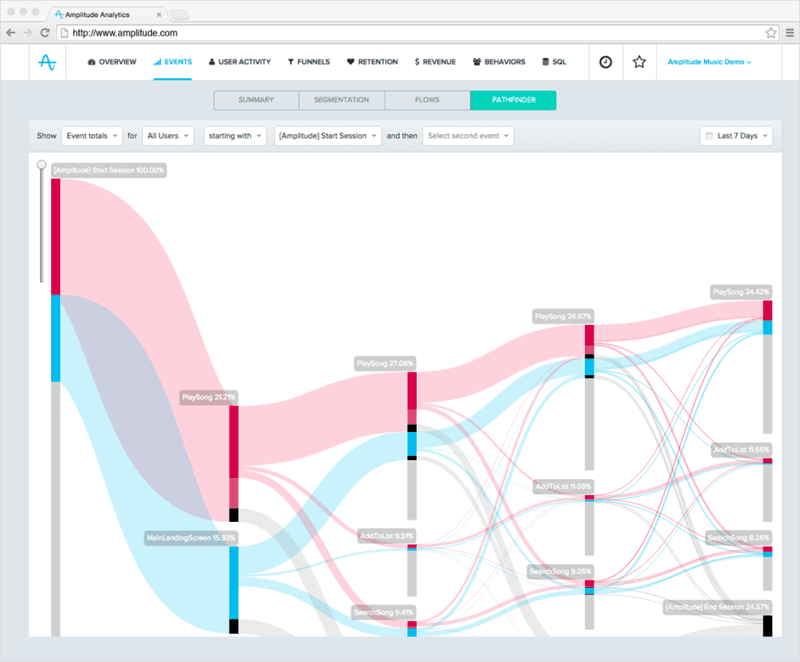
Source: amplitude.com
The next of our analytics user retention tools under the microscope is Amplitude.
Amplitude
Amplitude started out as a product analytics tool (Mixpanel’s background is in mobile). It’s narrower but more focused on actionable analysis.
Amplitude also features a wide range of two-way integrations with other platforms and is generally thought of as providing better single-user tracking across different products.
One area where Amplitude is regularly praised is pricing. The free plan allows you to track up to 10 million actions, which is a lot.
But conversely, a lot of people complain that Amplitude gets expensive fast – especially as many of its unique features are available only to premium customers.
Like Mixpanel, Amplitude needs configuration to define the events to be tracked.
Heap
Source: heap.io
Unlike its competitors, Heap records ALL user actions, not just those it has been told to track. That makes Heap much quicker and easier to set up, deploy and start getting results from.
This is really helpful, as it means you don’t have to decide on everything that matters in the user journey before you start implementing your analytics platform.
Heap provides a complete, historical dataset you can refer back to – whereas the other platforms will miss anything you didn’t tell them to keep an eye out for.
Heap is also designed for teams. Data is available to everyone in an organization.
But the main drawback is that Heap’s free plan is fairly limited and it can become expensive quickly.
Iteratively adds a different value proposition – it actually integrates with all your data sources (including Amplitude, Mixpanel, and Google Analytics) to give you a ‘single source of truth and declutter your analytics:
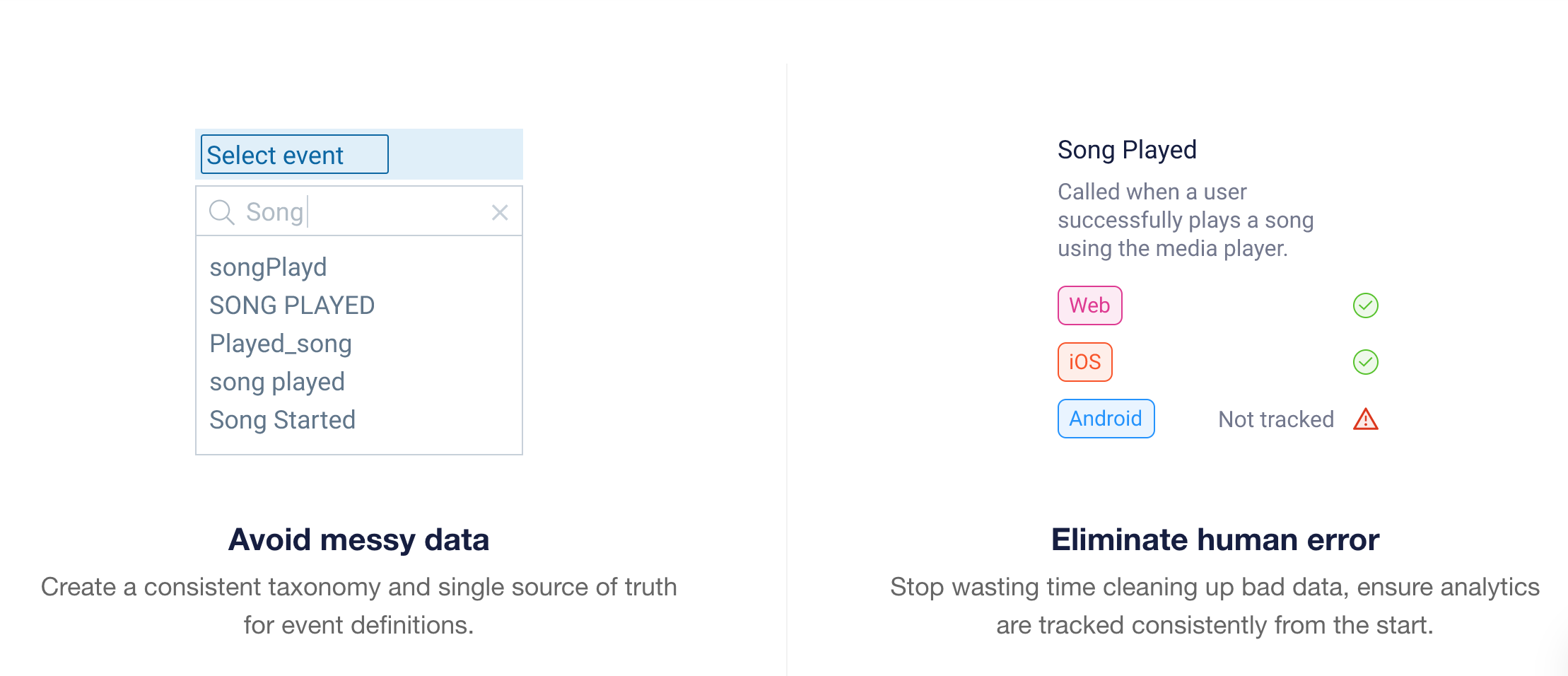
Iteratively was designed to make sure that no valuable insights get lost in cross-department communication and to bring your whole company ‘on the same page.’
So if you feel your product managers, data scientists, and developers are not speaking the same language in your company due to ‘data clutter’ – Iteratively may be the best option for you.
The best alternative – Userpilot
If you’re relatively new to analytics or you’re unsure about your user journeys, Heap has some distinct advantages.
If you’re an expert, you know what you need and you know how to get it, Mixpanel or Amplitude might suit you better.
Or maybe you don’t need any of them. Some SaaS companies get by just fine with good old session-based Google Analytics!
Plenty of Userpilot’s customers get more than enough from the analytics tools included in our offering – all of which are geared exclusively towards user retention.
So if the focus is the funnel analysis, activation metrics, feature adoption, etc – all key retention measures, as we’ll look at in the next section – then it may be that you’d be wasting money by splashing out on a dedicated analytics platform, when everything you need is already included as part of other packages.
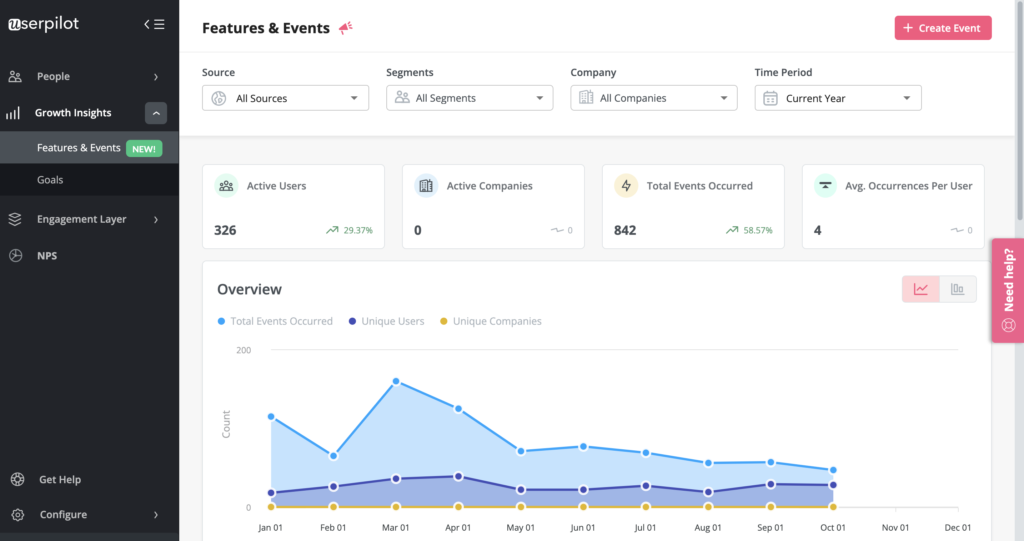
One final word on analytics before we move on to the next group of user retention tools.
In the past, your choice of analytics platform was a decision that was very difficult to reverse. Getting your data out of one proprietary system and into another was a nightmare.
Thankfully, today… there’s an app for that.
(See what we did there?)
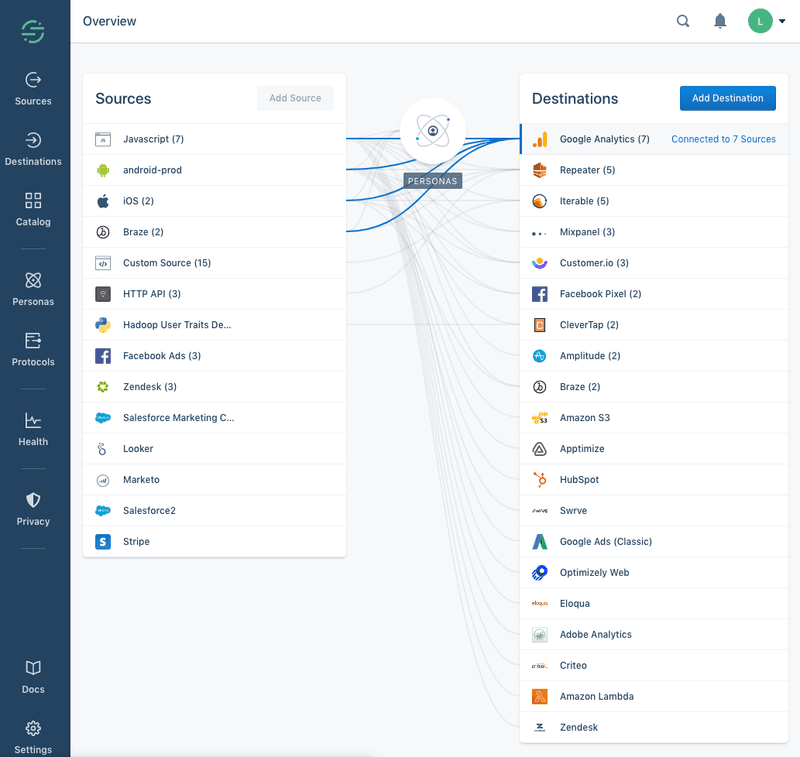
Source: segment.com
Tools like Segment (shown above) make it easy to combine, export, and integrate data from different sources. That means if you try one platform and don’t find it’s right for you, it’s a lot easier to change than it once was.
User retention tools – CX
But analytics tools alone are not enough.
Analytics tells you what has already happened.
When a user churns, your analytics data will tell you useful information that you can use to ensure that others don’t fail to achieve value in the same way.
However, once a user has canceled their subscription, it’s often very difficult – and possibly not worth the effort – to win them back over.
Churn is a notoriously laggy, backward-looking metric.
To stop users from deciding to cancel, you need to know how they are feeling about your product right now, while they’re using it.
In this section, we’ll look at 4types of user retention tools that relate to CX.
#1 Replay User Sessions
There are lots of tools that can record a user’s experience and play it back to you.
That’s incredibly useful in two ways:
- For diagnosing individual bugs and task-completion problems
- By compiling multiple recordings, you can build up a picture of how users actually interact with your site – which allows you to improve it
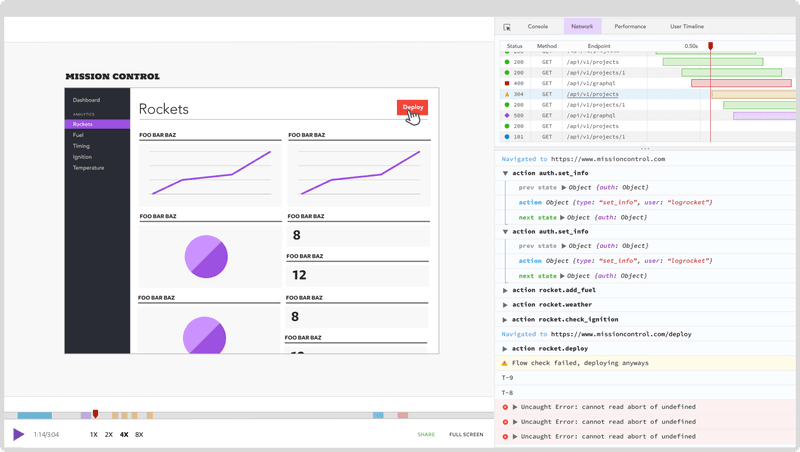
Source: logrocket.com
Here are a few of our tips for screen recording tools:
- Smartlook is great for differentiating between user views on different devices, OSs, and browsers
- Hotjar provides easy-to-use heatmaps, showing which parts of your app or your website are seeing the most interaction
- Logrocket (shown above) doesn’t just record sessions as seen – it also produces a detailed event-by-event log file, which can really help you to recreate and fix bugs
- Fullstory uses AI to automatically identify and recommend CX improvements that will improve retention and revenue
#2 Survey Your Users
The most straightforward way to find out what users think of your tool is to ask them.
There are literally hundreds of tools available for collecting user feedback.
Probably the most commonly used is Mailchimp, which sends out multi-question surveys by email.
That’s fine for some use cases, but if you want to get really close-up into your users’ experiences an email won’t do the job.
If the questions are tied to a specific event – such as an “aha” moment or the completion of a task – then:
- Using email means a time delay
- Using email requires a change of platform, from your app to the email client
Both those factors will dilute the validity of the feedback provided and reduce your response rate.
Thankfully, there are tools that allow you to deploy “micro-surveys” in-app.
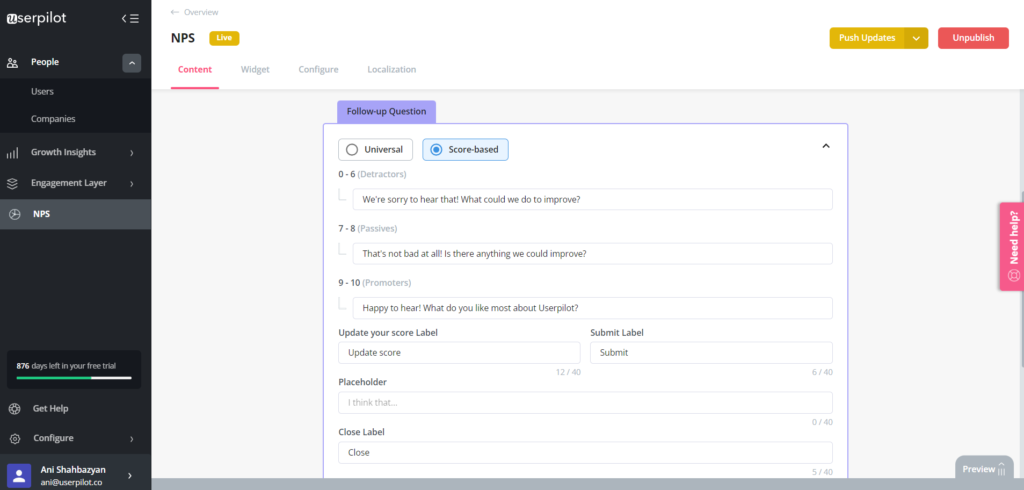
Here’s how we allow our users to create NPS surveys in Userpilot, for example.
The more closely you can tie the question to the experience, so it’s vital to pick a tool that embeds the feedback process directly into the workflow.
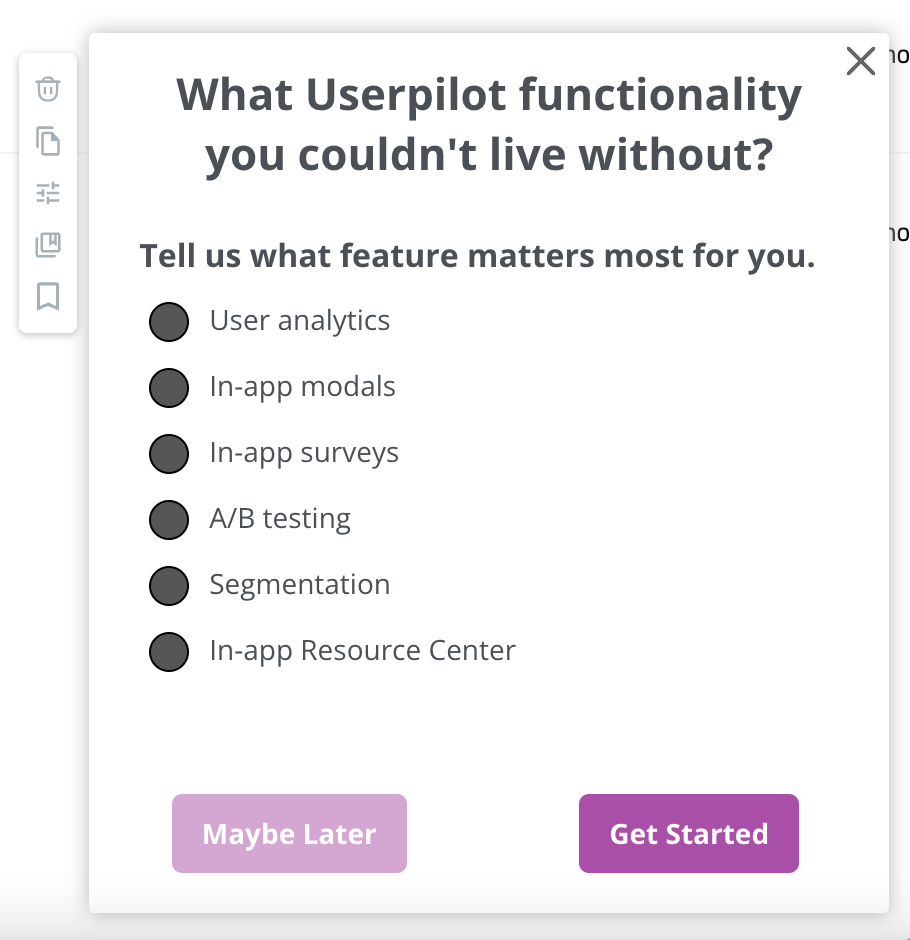
In this case, we’re using a pop-up window to ask a question immediately relevant to what the user is doing.
#3 Customer Health Scoring
As well as proactively asking users how they are feeling about your tool, you can build up a picture reactively using your analytics data to compile a customer health score.
A customer health score is produced by giving a series of weights to different actions carried out (or not carried out) by users, which are then compiled into an engagement index.
Low-scoring users are considered at risk and can be addressed accordingly.
Patrick Thompson of Iteratively gives a great explanation in this video presentation.
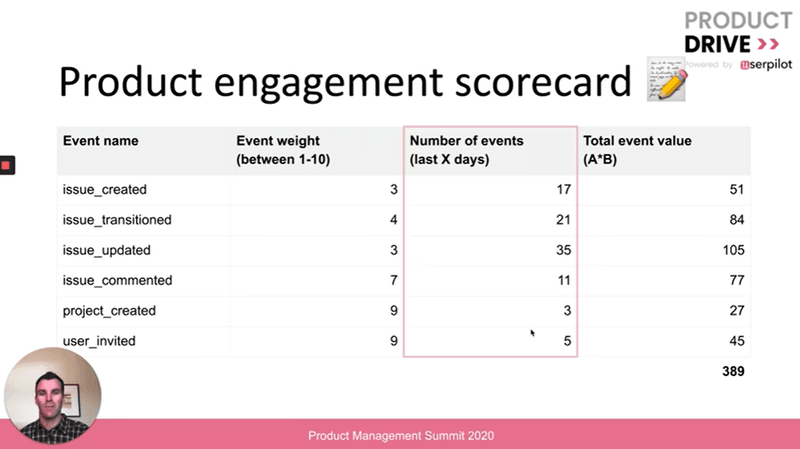
Source: Patrick Thompson, Iteratively
Once again, there are many tools to choose from in this space.
Sherlock is one that we like, combining behavioral data with AI-driven insights.
Source: sherlock.com
You can read more about our thoughts on Sherlock here.
Other CX tools that include customer health scoring are Gainsight, Totango, and Preact.
#4 A/B Testing
Experimentation is key to finding the recipe to better CX.
A/B or split testing is a well-established method for seeing which of two solutions gets better results.
Userpilot is just one of the many tools on the market that includes A/B testing as part of its functionality. Here’s how our UX lets you split experiences by persona:
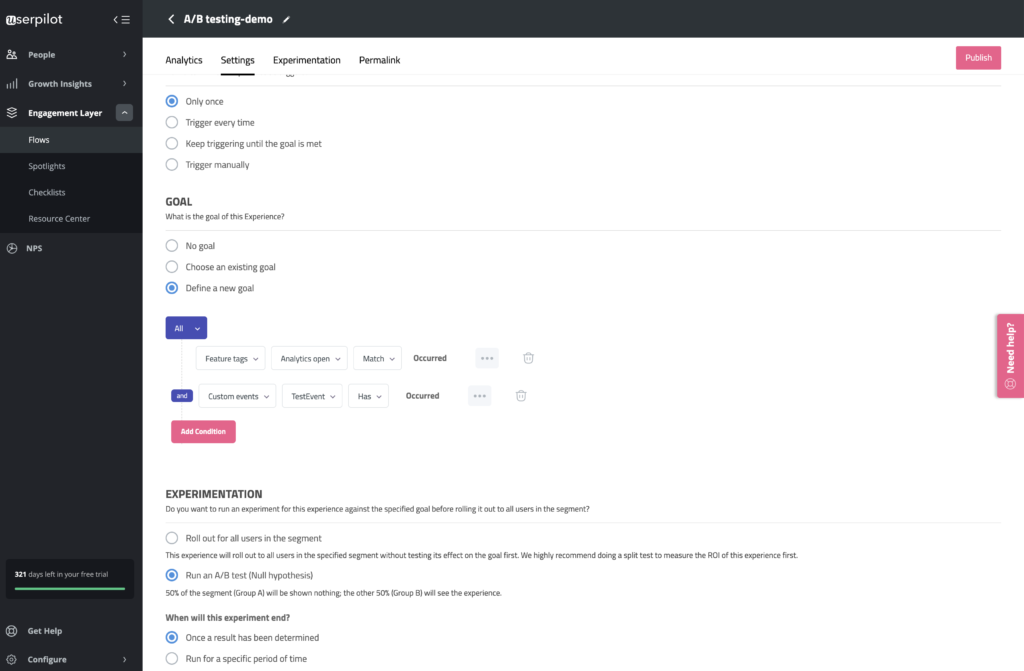
On the other hand, there are plenty of dedicated testing tools available if you have really specific, custom use case requirements.
One of the best is Optimizely – although, as often seems to be the case with dedicated tools (like Mixpanel) a lot of users find it hard to get to grips with.
User Retention Tools – Communication
Everything we’ve talked about so far focuses on letting you know what sort of experiences your users might be having that incline them toward retention or churn.
This section looks at the tools you should use to fix the problems – or to seize the opportunities – that you’ve spotted.
As we mentioned earlier, there are lots of email tools available as well as product suites that include email functionality. Customer.io is a good all-around one for SaaS companies.
But email is only a part of your ideal communications mix. Just like with surveys, emails take users out of the immediate context of your app – and you’re more likely to get results when you provide the advice immediately at the point and in the location of the issue you’re advising on.
Email is best reserved for re-engaging inactive users then.
Send people who haven’t logged in to your tool for a while an email reminding them of the value they will get out of doing so, like this.
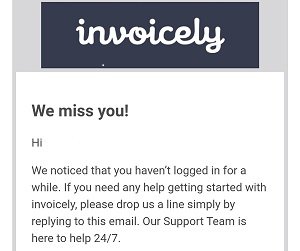
Source: invoicely.com
For the best results – again – you need to be communicating with your users in-app:
- With contextual slide-outs and tooltips, triggered by user actions
- With onboarding training. We recommend interactive walkthroughs for this – they’re much more effective than product demonstrations!
- With FAQ libraries and a comprehensive help widget

Once again, not wishing to blow our own trumpet, but these are ALL features are there in Userpilot.
(Btw. – Why not join our newsletter?)
Many SaaS products today incorporate chatbots to bridge the gap between FAQs and human customer success teams.
If you think you need something like this – perhaps you have a lot of complex use cases or a high volume of user queries – then we recommend Drift or Helpcrunch.
Both are easy to implement and intuitive for users to engage with.
Other types of user retention tools
According to Normalys, using a CRM tool properly (which is easier said than done…) can boost retention by up to 27%.
World-renowned CRM applications like Salesforce and niche challengers like SalesFlare and HubSpot help product managers personalize and tailor the experiences that users receive.
CRM is a massive topic in itself and not one we can do justice to here.
We’re only mentioning CRM as a footnote to the main discussion because it’s not something that works directly on retention as such.
That’s true also of tools like Profitwell’s Retain – which helps SaaS businesses to recover missed payments.
Failed payments are one of the biggest and most easily remediable causes of churn. Ultimately, we care about retention because we care about recurring revenue. So Retain does also fit into the user retention tools category.
SimilarTech is another tool worth mentioning. It can send you alerts when your users start using another, similar technology.
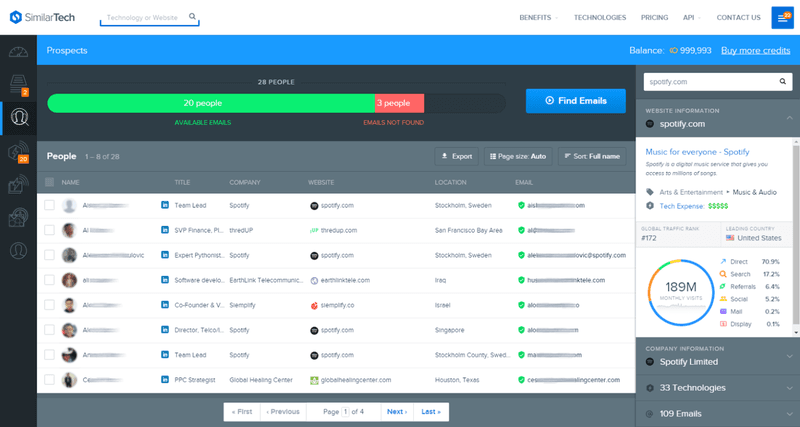
Source: similartech.com
That can be a great way of spotting when a customer is trying out a competitor – allowing you to pre-emptively reassert the value of your own offering.
Beyond everything else we’ve talked about in this blog, there are a whole host of other factors to take into account when selecting your user retention tools that we’ve touched on but not focused closely on:
- Does the tool provide a library of ready-to-go use case templates or do you have to build them from scratch?
- Can it be implemented without code, or does it need developer resources to deploy?
- Is it compatible with the other tools in your stack or are you going to be importing and exporting data to spreadsheets like it’s 1995 – let alone 2009 – all over again?
Finally, if there’s anything you can’t find a tool for, make sure you check out IFTTT (If This Then That) and Zapier. These tools enable the flow of information from one app or device to others, in almost unlimited combinations.
Whether you’re using these integrations for analytics – transferring data between systems – or for creating connected customer experiences, these tools can help you to bridge the gaps where dedicated tools are missing or don’t hit the mark for you.
These are all things you need to bear in mind when selecting your user retention tools, and they push a lot of product managers towards one-stop solutions that incorporate a lot of different functionality as Userpilot does.
So that’s our guide to picking the best user retention tools. We hope you found it useful! Please add your own tips, tricks, and tools below…

